If you love Steampunk outfits you have to look at Alisa's website!!!!. She makes really beautifull costumes!!! http://www.freewebs.com/dragonflydesignsbyalisa/
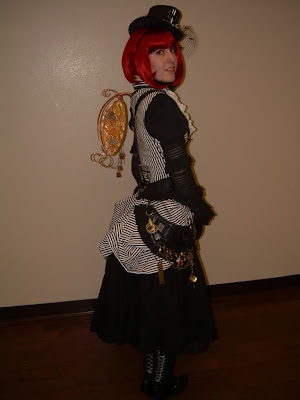 Steampunk Black&White
Steampunk Black&White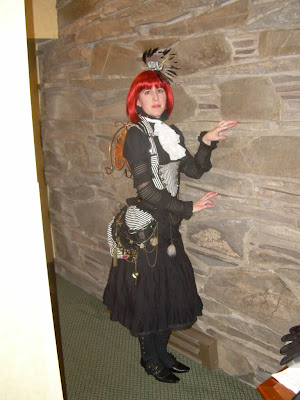
 Steampunk Saloon
Steampunk Saloon
 Steampunk Geisha
Steampunk Geisha
 Steampunk Black&White
Steampunk Black&White
 Steampunk Saloon
Steampunk Saloon
 Steampunk Geisha
Steampunk Geisha

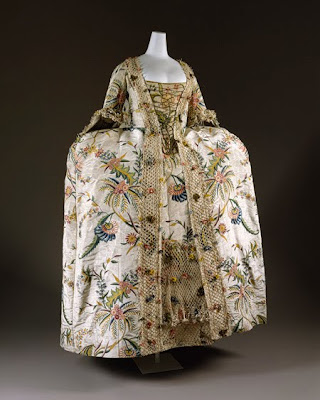 link
link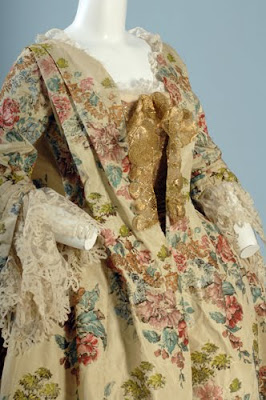 link
linkThe contouche can be seen as having developed from the manteau by letting the folds in back fly loose instead of tacking them down. It started out as neglige in the late 17th century and developed into the robe battante or robe volante ("flying gown") during the Régence (1715-1723).
The robe volante had pleats in back, starting below the shoulders, and a circular skirt which was lifted up in front to reveal the jupe. It was closed in front and pulled over the head. During the Régence, ladies started to wear it outside the house as well, and it could be seen draped over the huge domes of early paniers.
During the 30s, the garment changed its name to robe à la française and was worn open in front, but still much resembled a wrapping gown. While it found its way into formal and court wear, it gradually developed a waist as the front panels and sides were cut and pleated to shape. The front opened over a stomacher or the corset and the jupe.
During the second half of the century, the pleats in back became narrower, so that in fact they were only an addition on an otherwise fitted gown. The extreme was reached with the robe à la piemontaise, where the pleats had degenerated into an appendix fixed to the back of the shoulders. In that shape, the contouche continued as court fashion until the French Revolution, after which it faded into oblivion.
 This year the elf fantay fair is on 16 & 17 april 2011 http://haarzuilens.elffantasyfair.com/index.php/en
This year the elf fantay fair is on 16 & 17 april 2011 http://haarzuilens.elffantasyfair.com/index.php/en



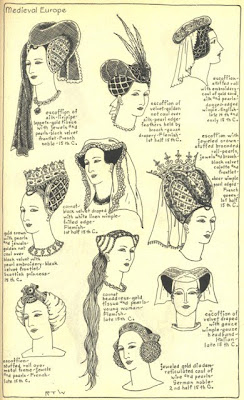 i found this amazing gallery online!!!..all about hats..23 chapters and 193 images http://gallery.villagehatshop.com/gallery/
i found this amazing gallery online!!!..all about hats..23 chapters and 193 images http://gallery.villagehatshop.com/gallery/
THE MODE IN HATS AND HEADDRESS
By R. Turner Wilcox
